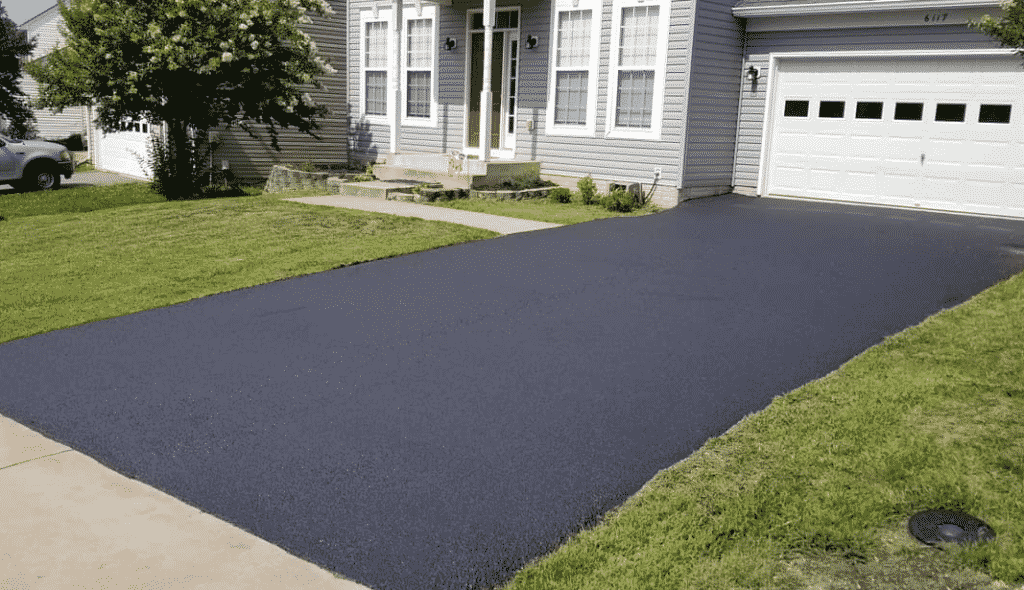Cold Mix Asphalt Vs. Hot Mix Asphalt: Which Is Right for You?

Make-up Differences
Cold mix and hot mix asphalts differ considerably in their structure, with unique attributes that affect their performance and applications. Cold mix asphalt is created by emulsifying the asphalt binder with water and an emulsifying representative before mixing it with accumulation. This technique permits the asphalt to be convenient at reduced temperatures, making it perfect for momentary repair work and for use in cooler weather condition problems. Hot mix asphalt, on the other hand, is made at heats, normally between 300-350 ° F, which aids to achieve better compaction and a more resilient last item. The hot mix asphalt manufacturing procedure includes warming the aggregate and asphalt binder separately before integrating them at the asphalt plant.
In addition, cold mix asphalt often tends to be much less thick and more adaptable than warm mix asphalt. This adaptability makes it much better suited for locations with greater degrees of activity, such as driveways or roads with hefty website traffic. In comparison, hot mix asphalt is recognized for its high sturdiness and resistance to rutting and breaking, making it a favored choice for highways and high-traffic roadways where durability is crucial.
Setup Process Variations
The process of setting up cool mix and hot mix asphalt exhibits significant variances in their requirements and procedures. In comparison, hot mix asphalt necessitates a much more fancy installment process. Due to the home heating requirements, hot mix asphalt setups are commonly brought out by experts with customized tools, making sure an extra structurally audio and long-term result.
Longevity and Longevity Variables
When thinking about asphalt choices, sturdiness and durability are critical elements to assess for enduring pavement efficiency. Warm mix asphalt (HMA) is known for its exceptional resilience and longevity. The heats during the laying and mixing procedure permit far better compaction, resulting in a denser and stronger sidewalk structure. This results in HMA being more resistant to hefty web traffic loads, harsh climate condition, and the effects old compared to chilly mix asphalt (CMA)
In regards to durability, HMA normally outmatches CMA as a result of its premium stamina and resistance residential or commercial properties. HMA pavements have a longer life span, calling for less frequent fixings and upkeep, which can equate to set you back savings in the future. In addition, HMA sidewalks are much more conveniently adjustable to meet details job requirements, further improving their longevity.
Expense Considerations
Considering the financial effects is an important facet when evaluating the choice between hot mix asphalt (HMA) and cool mix asphalt (CMA) for sidewalk tasks. While the preliminary expense of warm mix asphalt is generally more than that of cold mix asphalt, HMA frequently supplies an extra economical option over time because of its exceptional sturdiness and long life. HMA is known for its capability to withstand heavy web traffic tons and severe climate condition, minimizing the demand for regular repair services and upkeep. On the other hand, cool mix asphalt is more economical ahead of time yet might require more constant patching and resurfacing, bring about greater maintenance expenses gradually.
Along with material expenses, it's important to take into consideration the costs connected with installation and upkeep when comparing HMA and CMA. HMA usually calls for customized tools and knowledgeable official site labor for proper installment, which can affect total project costs. Alternatively, CMA is simpler to collaborate with and can often be used making use of less complex methods, potentially reducing installment expenses. Eventually, the choice in between HMA and CMA should think about not simply the initial price but also the lasting economic ramifications to determine the most affordable alternative for the particular pavement task.
Environmental Effect Comparison
Contrast of the ecological effects between hot mix asphalt (HMA) and chilly mix asphalt (CMA) discloses distinct distinctions in sustainability practices. HMA manufacturing requires high temperature levels, causing raised energy intake and greenhouse gas discharges. The process likewise launches volatile natural substances (VOCs) and unsafe air contaminants (HAPs) into the atmosphere. In contrast, CMA is created and applied at reduced temperatures, minimizing energy use and exhausts significantly. The reduced manufacturing temperature levels of CMA cause reduced fuel consumption and lower levels of carbon dioxide site emissions, making it an extra eco-friendly option.
Additionally, using CMA often involves recycling existing asphalt pavement, advertising resource conservation and lowering the quantity of waste sent out to land fills. This recycling element even more boosts the sustainability of CMA compared to HMA. Overall, when taking into consideration the environmental effect, CMA emerges as a more eco lasting choice because of its lower energy needs, reduced exhausts, and the capacity for recycling existing products. By deciding for CMA over HMA, road building tasks can add favorably to environmental conservation initiatives.
Final Thought
Finally, the choice in between chilly mix asphalt (CMA) and hot mix asphalt (HMA) depends upon various elements such as composition, setup procedure, toughness, long life, price, and ecological influence. asphalt patch repair. While CMA supplies a quick and cost-efficient option for minor repairs, HMA makes sure remarkable sturdiness and durability for heavy traffic areas. Consider these variables carefully to figure out which sort of asphalt Website is the right choice for your paving requires

Considering the economic implications is a crucial element when reviewing the option between hot mix asphalt (HMA) and cold mix asphalt (CMA) for pavement jobs. While the preliminary cost of hot mix asphalt is commonly higher than that of cool mix asphalt, HMA typically supplies an extra cost-efficient service in the long run due to its premium resilience and longevity. cold mix asphalt.Comparison of the ecological impacts in between hot mix asphalt (HMA) and cool mix asphalt (CMA) discloses distinct distinctions in sustainability techniques.In conclusion, the selection between cold mix asphalt (CMA) and warm mix asphalt (HMA) depends on various aspects such as structure, setup procedure, sturdiness, longevity, price, and ecological impact